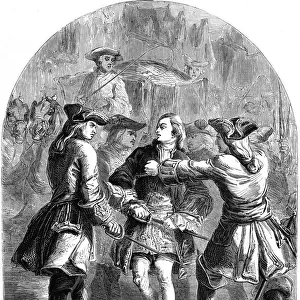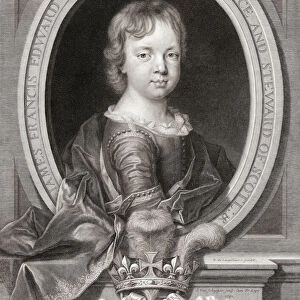Home > Design Pics > Historical
Kelly burning the treasonable papers, 1722. George Kelly, 1688-1762. Irish nonjuring Protestant clergyman and one of The Seven Men of Moidart, in Jacobite folklore, seven followers of Charles Edward Stuart. From Cassells Illustrated History of England, published c. 1890
![]()

Wall Art and Photo Gifts from Design Pics
Kelly burning the treasonable papers, 1722. George Kelly, 1688-1762. Irish nonjuring Protestant clergyman and one of The Seven Men of Moidart, in Jacobite folklore, seven followers of Charles Edward Stuart. From Cassells Illustrated History of England, published c. 1890
Kelly burning the treasonable papers, 1722. George Kelly, 1688-1762. Irish nonjuring Protestant clergyman and one of The Seven Men of Moidart, in Jacobite folklore, seven followers of Charles Edward Stuart. From Cassells Illustrated History of England, published c.1890
Design Pics offers Distinctively Different Imagery representing over 1,500 contributors
Media ID 24908661
© Ken Welsh
18th Century Burning Candle Clergyman Folklore Irish Jacobite Jacobite Risings Protestant Sword 1722 Charles Edward Stuart Conspirator Jacobite Rising
EDITORS COMMENTS
The captivating print titled "Kelly burning the treasonable papers, 1722" transports us back to a significant moment in history. The image captures George Kelly, an Irish nonjuring Protestant clergyman and one of The Seven Men of Moidart, engaged in a clandestine act that would forever be etched into Jacobite folklore. In this scene from Cassells Illustrated History of England, published around 1890, we witness Kelly fearlessly setting fire to the incriminating documents. These papers were deemed treasonable and held critical information relating to the Jacobite conspiracy led by Charles Edward Stuart. As we delve into this historical snapshot, our eyes are drawn to the intensity on Kelly's face as he wields his sword with determination while holding a candle close to ignite the flames. This engraving serves as an archival testament to his unwavering loyalty towards his cause. The vintage aesthetic adds depth and authenticity to this illustration from the 18th century. It allows us a glimpse into a period filled with political turmoil and intrigue. Through this picture, we can almost hear whispers of secret meetings and feel the weight of responsibility carried by these conspirators. Ken Welsh's masterful capture not only preserves an important moment but also invites us to reflect upon the sacrifices made by those who fought for their beliefs during turbulent times in history.
MADE IN THE USA
Safe Shipping with 30 Day Money Back Guarantee
FREE PERSONALISATION*
We are proud to offer a range of customisation features including Personalised Captions, Color Filters and Picture Zoom Tools
SECURE PAYMENTS
We happily accept a wide range of payment options so you can pay for the things you need in the way that is most convenient for you
* Options may vary by product and licensing agreement. Zoomed Pictures can be adjusted in the Cart.













